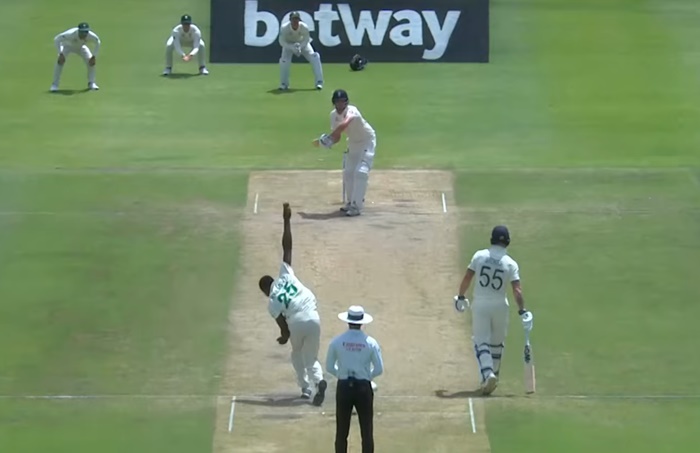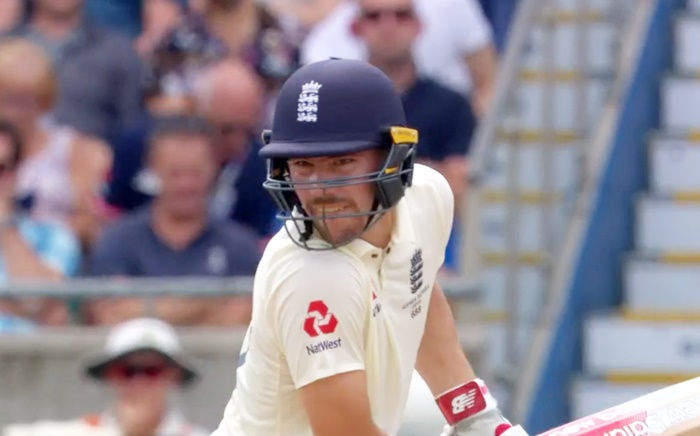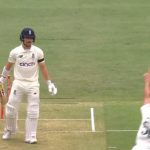
We have this theory that the more ungainly and awkward a new Test batsman looks, the more likely he is to succeed. Our reasoning is that if you’ve made it to the highest level looking as awful as that, you can only be a highly effective run-scorer.
Some batsmen are given a bit of extra credit. Unfurl a smooth cover drive and you can guarantee that someone, somewhere will say that you have “a touch of class” about you.
“Class” is for the most part a nebulous, meaningless thing that invisibly bolsters some batsmen’s first-class averages in the eyes of selectors. Those without it have to do things the hard way – by being good at batting.
Rory Burns

England’s Rory Burns is not, for most people, a delight to watch.
Most obviously, there’s the twitch. Every time the bowler runs in, an invisible foe makes as if to break Burns’ neck before apparently thinking better of it.
He says this jerky head movement is because he’s ‘left eye dominant,’ so it’s an effort to get his head a bit further round so he can actually use the thing. It looks stupid, but he has gradually been adapting to Test cricket and when fit, he is now England’s first choice at the top of the order.
Dom Sibley

Most people think that Dom Sibley faces the wrong way and that he holds his bat like a man who’s never held a cricket bat before. But again, it seems to work for him.
His early Tests were marked by much talk about how he “couldn’t access the off-side” with his idiosyncratic technique. When he made his first Test hundred, against South Africa, he revealed that he very much could. The one shot he seems unable to play is the pointless defensive stroke with an angled bat to balls missing his off stump.
Technique
We don’t really know about technique. Fortunately, we’re lucky enough to be aware of our ignorance. A lot of commentators and pundits think they know about technique, but all they really do is measure a batsman against textbook technique and point out differences. That’s not the same thing.
There are different ways to make the hitting of cricket balls work.
How many times have you heard a dissection of an unconventional but effective batsman’s technique where they go, “Actually, at the point he strikes the ball, his head’s in a great position and he’s well balanced and everything’s magical and perfect and great”?
It happens all the time. They always do this after-the-fact analysis once a batsman’s proved himself an effective run-scorer. Until they’re racking up hundreds, quirks are seen as flaws.
Opening partners
Burns and Sibley together are weirdness squared. If they stick around for the next few years, theirs will rank up there with the most aesthetically displeasing opening partnerships of all time.
Without exhaustive research, two of the crabbier prose-in-motion openers of recent times have been South Africa’s Graeme Smith and Australia’s Simon Katich. We’re not sure either ever really had a partner who was in a similar league.
No-one was going out of their way to watch Alviro Petersen or Neil McKenzie bat with Smith, but neither was especially unconventional. Katich did most of his opening with Shane Watson, whose technique was as straight as the balls that tended to dismiss him.
If you’ve any nominations for the greatest aesthetically displeasing opening partnership of all time, please let us know in the comments below.




Did Katich ever open with Chris Rogers? That would have been pretty hideous.
And of course Hayden/Langer were hideous, but not quite in the way you are talking about.
Tragically, they didn’t play together.
G. Smith and G. Kirsten? They seem to have had 2 overlapping years.
Smith came in in the middle order and then he and Kirsten swapped and Smith opened with Herschelle Gibbs.
Cook and Jennings?
It’s happening. Is it happening? Might not be happening.
Out! No Pants strikes!
I was going to check if Chanderpaul ever opened with someone ‘aesthetically displeasing’ but then I remembered that Shiv’s batting was the most aesthetically pleasing of all.
PS where does Joe Denly’s bowling fit into his inconclusiveness?
(PS I clearly meant Shiv in ODIs, not Tests, I definitely didn’t assume he’d opened in Tests and then retrospectively check it on Statsguru)
Denly’s whipped out the bowling so that he can stay ahead of Zak Crawley without renouncing batting mediocrity.
He’s already overtaken Bell in terms of Test wickets, if at some point over the summer he makes a century when Burns and Sibley have both already done so, it could be time for another campaign….
Kaushal Silva and Dimuth Karunaratne merit a mention, mainly because of Kaushal, who made batting look more difficult than anyone else I’ve ever seen.
In the mid 1970s, when Boycott took a “sabbatical” to avoid the twin perils of Slime Denness’s captaincy and some fearsome bowling attacks, England went through a weird period of rotating the top few, with several crabby-looking players opening the batting.
In my mind, Edrich (John) & Lloyd (David) were probably the pinnacle. Pretty sure they opened the batting together on occasion, although Edrich preferred to be crabby at three.
As an example of the worst excesses of this, I give you the first test between England and Pakistan in 1974. Openers Dennis Amiss and David Lloyd, followed by John Edrich, then Mike “Slime” Denness, then Keith Fletcher. That must be the crabbiest top five anywhere ever.
No wonder my batting doesn’t look pretty; weaned on that.
I can’t find a suitable clip to show the test crabbiness of 1974, but within the link below is an ODI highlights package, inserted to show the delights of Asif Masood’s bowling, that does show some of our guys and their crabby style back then.
http://ianlouisharris.com/1974/09/03/back-when-i-didnt-know-my-asif-from-my-sarfraz-cricket-on-tooting-bec-common-summer-1974/
Research reveals that Graeme Smith and Dean Elgar opened together in 1 glorious Test.
https://www.espncricinfo.com/series/11812/scorecard/648675/south-africa-vs-australia-2nd-test-australia-tour-of-south-africa-2013-14
Indeed. That was the “J P Duminy is going to be the next big thing” test. Whatever happened to that proposition?
Thinking overnight about the crabby looking England players of the mid-1970s and their effectiveness – the big issue for that lot was the different conditions around the world. Their style suited dibbly-dobbly bowling in English conditions, but they all fell short against Sarfraz’s swing and/or the raw pace of the Aussie and West Indian attacks, especially on hard fast antipodean tracks etc.
Sibley’s ton at Newlands is a good sign in that department, but he still has a lot to prove, as does Rory Burns, who looks, in style terms, exactly the sort of crabby player who might thrive until the hardness of the pitches and the pace of the bowlers goes up a couple of notches. We’ll see over the next couple of years and and it’ll be interesting viewing.
Tavaré and Boycott
They were among the hardest to watch, certainly, but that was maybe less to do with the aesthetics and more to do with the inaction.